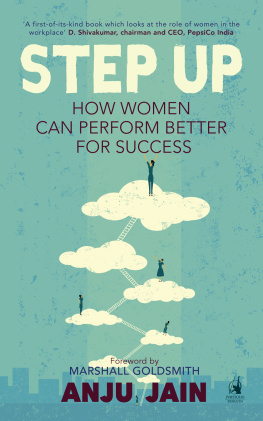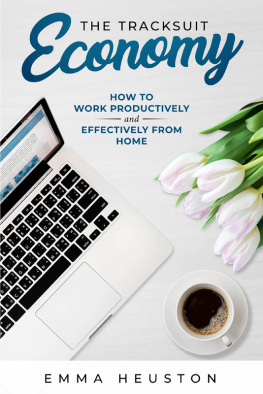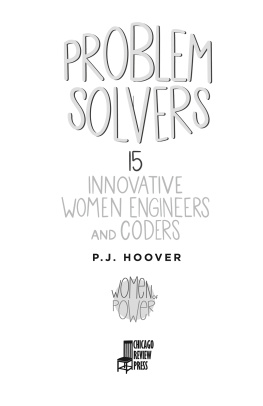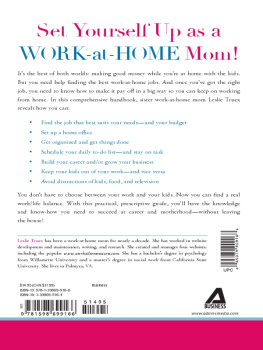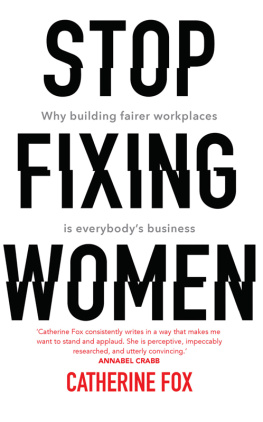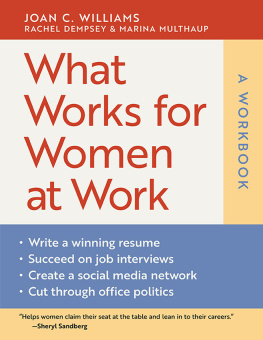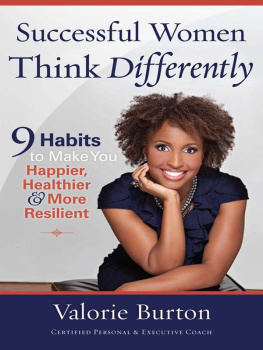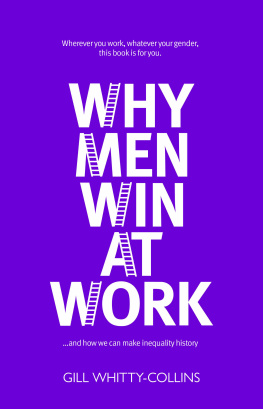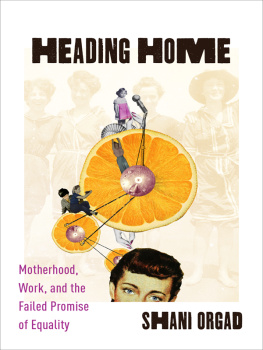Women have an enormous impact on society, as consumers and increasingly now as part of the workforce. India will see more women come into the workforce in the next thirty years as compared to men. Anju Jain has written a first-of-its-kind book, where she looks at the role of women in the workplace from various angles. This is the most comprehensive 360-degree view that I have read about this enormous opportunity waiting to explode in the Indian workplaceD. Shivakumar, chairman and CEO, PepsiCo India
This is a holistic, fresh look at how we can bring more women to leadershipby asking women, men and organizations to truly step upDoug Oberhelman, chairman and CEO, Caterpillar Inc.
It is a very timely book on some very important issues affecting all societies. The case of the missing women in classrooms, factories, offices, executive suites and boardrooms is serious and remains unresolved. Jain outlines the practical way forward, and the interviews are most inspiringArun Duggal, former CEO, Bank of America
A very interesting take on women leadership. First of its kind to provide a coherent framework and strategies to change the missing women scenario in IndiaOm Prakash Bhatt, former chairman, State Bank of India
Foreword
W OMEN HAVE MADE staggering progress in my lifetime, breaking barriers in sports, politics, arts, business and just about every other endeavour. But we as a society have much more work to do to create real gender equality.
In Step Up, Anju Jain shows us the path forward.
Throughout this compelling book, she draws out the commonalities among women and defines the challenges they typically face. Whether shes discussing Indian culture or societal expectations more broadly, she argues convincingly that gender disparity exists in many forms.
In more than thirty years as an executive coach, I have worked with many powerful leaderspeople who have made a big impact on their organizations, their industries and the world. Remarkably, few women have occupied these top leadership roles. They are still a vast minority in C-suites and boardrooms and in leadership generally.
In the United States, where I live (when Im not travelling around the world), many women leaders have broken the mould and succeeded despite the oddsincluding some remarkable Indian women. Take Indra Nooyi, for example. She came to the US in the 1970s and gradually made a mark for herself. Today, as chairperson and CEO of PepsiCo, she is leading a large global corporation. This tenure has earned her acclaim from the press, leadership experts and beyond. She is just one example.
Within India too, women have made it to the topafter all, India was much ahead in electing Indira Gandhi as the prime minister in 1966. And women continue to ascend in government. Smriti Irani started as a model and television actor, and gradually gained influence in political circles, eventually rising to become the minister for human resource development in the Narendra Modi government (as of this writing, she has just been appointed the textiles minister). In the private sector, Chanda Kochhar, Kiran Mazumdar-Shaw, Naina Lal Kidwai and many others have made notable contributions.
Society will benefit if more women achieve their highest ambitions, not only for their personal fulfilment but for other reasons as well. A wealth of research shows that companies with women in leadership positions perform better. I have come to a similar conclusion based on my own research through 360-degree feedback (the assessments that come from people who surround a leader, including bosses, peers and other stakeholders). Statistically, I have found that the average female leader gets better feedback on her leadership than the average male leader.
So why arent they occupying leadership seats? How do we achieve gender parity? How can women manage their personal and professional challenges better and lead a successful life? Anju offers practical strategies that women can use so they dont drop out of her promising careers, or pull back at work to survive their daily challenges. She takes a personal and unflinching look at her own life and experiences to show how she managed her home and career. In addition, she has interviewed successful women and men who provide deep perspectives on women leadership and its surrounding matters. Every one of their insights is worth absorbing, particularly the notion that women should feel no qualms about asking for helpfrom peers, managers, family and otherswhen managing their busy lives.
Whenever I am asked to speak at a womens leadership event, I hear women detail long lists of their flaws that need fixing. I hear them describe how they add tasks to their own workload rather than delegate.
If I have learnt one thing over a career coaching some of the worlds most successful people, it is that no one succeeds alone. I am a great believer in seeking help whenever you need it. In Anjus pragmatic and inspiring book, this help is at hand. It will help you take on the important work ahead of youbuilding your family, your career and a successful tomorrow for yourself.
Rancho Santa Fe
August 2016
Marshall Goldsmith
Bestselling author and leadership coach
Introduction
U NKNOWINGLY, MY TRYST with women and leadership began almost twenty years ago when I entered the corporate world. At that time, I had no clue about the existence of these two words. I was a blank slate coming out of graduate school with a zest to learn and work hard. I had dreams to make a difference and of course, in the process, earn some good money too. As trite as it may sound, I had never thought of myself as a woman or an aspiring leader then. It was all about performing and delivering the tasks at hand. It is only in hindsight that I am able to put the discrete pieces of my journey together and what I see emerging is a picture of a woman and that of a leader.
My entry to the real world of work is quite vivid in my mind. I still recall my job interview conducted in the city of New York. The hiring manager was a tall, broad-shouldered woman who came across as tough; hell-bent on proving that she didnt care an iota about my qualifications. It was clear that she was out to dig the dirt than find the gold. After three gruelling interviews with her and her seniors, I was offered the job.

